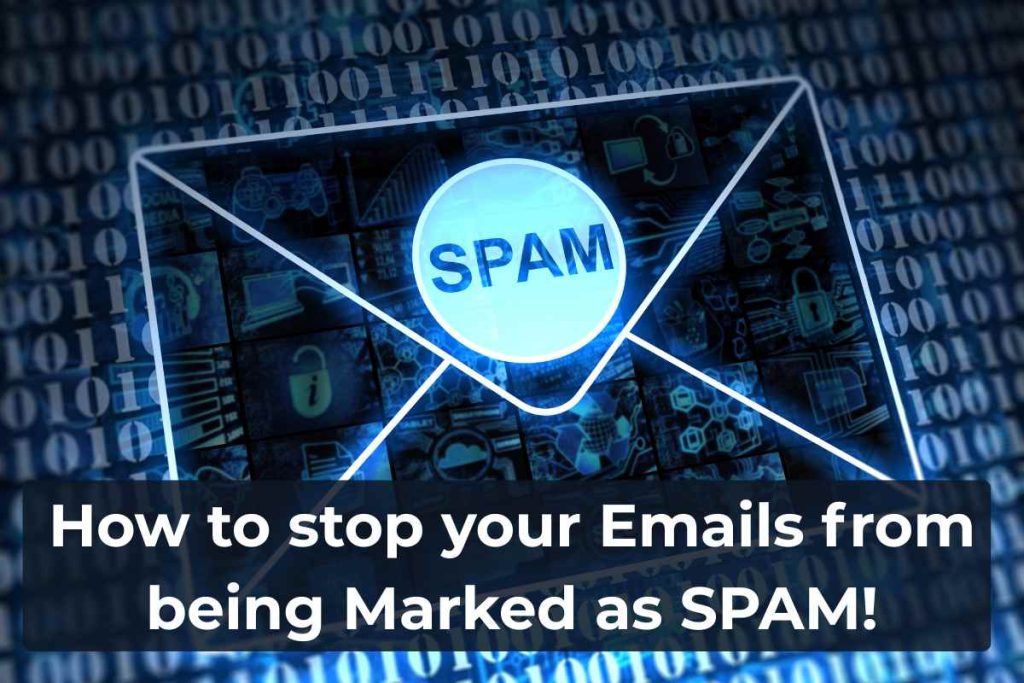🚫 Are you in danger of your Emails From Being Marked as Spam?
If your emails land in your client’s spam folder, it can cause serious trouble for your business. Worse, if your entire domain gets flagged, it might even stop your messages from going through at all. In this article, we’ll explain why this happens, what it means for your hosting and email setup, and how you can avoid it — before it hurts your reputation.
Imagine this: you send a quote to a client, and they never receive it. Days later, you find out your emails went straight to their spam folder — or worse — your entire domain got blocked. This can happen more often than you think… and it can hurt your business reputation fast.
At mellowd.co.za, I’ve seen several clients go through this. Once your domain is flagged for spam, fixing it can be a slow, technical, and stressful process. So today, let’s talk about why this happens, how to prevent it, and what to do if it’s already happened to you.
🚨 Why Can Emails Get Marked as Spam?
Spam filters are designed to protect people from junk, scams, and malware. But sometimes genuine businesses get caught in the net. Here’s how:
Using Free or Unverified Email Addresses
Sending emails from
yourbusiness@gmail.comthrough your website contact form or using email forwarding can trigger spam filters.Always send emails from a professional, verified domain address (e.g.
you@yourbusiness.co.za).
Bad Email Setup (Missing SPF, DKIM, DMARC)
These are technical records that prove your email is legit. Without them, email servers may think your email is faked or spoofed.
Sending Bulk Emails the Wrong Way
Sending newsletters or mass updates from your normal inbox (without using email marketing tools) can get you flagged.
Spammy Words or Attachments
Words like “free offer,” “click now,” or suspicious links and attachments can raise red flags.
Clients Marking Your Emails as Spam
Even if one client clicks “mark as spam,” it could affect your sender reputation across multiple email services.
💣 What Happens If Your Domain Gets Flagged?
When too many of your emails are flagged as spam by recipients or spam filters, email providers like Gmail, Outlook, or Yahoo begin to see your domain as untrustworthy. This is more than just an annoyance — it’s a real problem.
Here’s what can go wrong:
Your emails stop landing in inboxes
You may be blacklisted on major servers like Gmail, Outlook, Yahoo
Clients won’t receive quotes, invoices, or updates
Fixing the issue can take days or weeks, and sometimes you’ll need a new domain
You lose trust, credibility, and potentially money from missed opportunities.
That’s why it’s important to take steps early on to protect your email reputation.
✅ How to Prevent Your Emails From Being Marked as Spam
Let’s look at what you can do to stay safe and ensure your emails land in inboxes — not spam folders.
1. Use a Proper Business Email (Not Gmail or Yahoo)
👉 Always send business emails from your domain (e.g. info@yourbiz.co.za) — not personal or free addresses.
2. Set Up SPF, DKIM & DMARC Records
👉 These are security settings your hosting provider can help set up.
They protect your domain and tell email servers, “Yes, this email really came from us.”
💬 Ask your host:
“Please check my SPF, DKIM, and DMARC records to make sure my domain is correctly sending email.”
3. Never Use Website Forms to Forward to Gmail
👉 Forwarding contact form messages to a Gmail or free account often breaks headers and gets flagged.
💡 Instead:
Use an email address connected to your domain
Use plugins that store messages in your website backend
Or connect your form to a tool like SMTP or Mailgun
4. Avoid Attachments in First Emails
👉 Spam filters don’t like attachments unless the recipient expects them.
Use a download link instead if possible.
5. Keep Your Email List Clean
👉 If you’re doing email marketing:
Use tools like Mailchimp or Mailerlite
Never buy email lists
Always include an unsubscribe link
6. Don’t Overuse “Sales” Language
👉 Avoid using too many CAPS, emojis, or “Click now!” type phrases in emails.
7. Monitor Your Domain Reputation
👉 Use tools like mxtoolbox.com to check if your domain is on any blacklists.
8. Respond to Client Emails Promptly
👉 Email services reward active communication. When clients reply and open your messages, it helps your sender score.
9. Use a Reputable Hosting Provider
👉 Cheap or overcrowded servers may be used by spammers. Always go for a trusted host who can help if issues arise.
10. Get Technical Help When Needed
👉 If you’re unsure about DNS records or email errors, speak to someone who understands hosting and email setup (like me, at mellowd.co.za 😉).
💬 Final Words from Mel @ mellowd.co.za
Your email is one of the most important tools for running your business. But if it’s not set up properly, it could stop working — silently.
That’s why I always recommend a quick email audit when setting up your website or hosting. If you’re not sure where to start, feel free to reach out — a small tweak now could save you from a big headache later.















